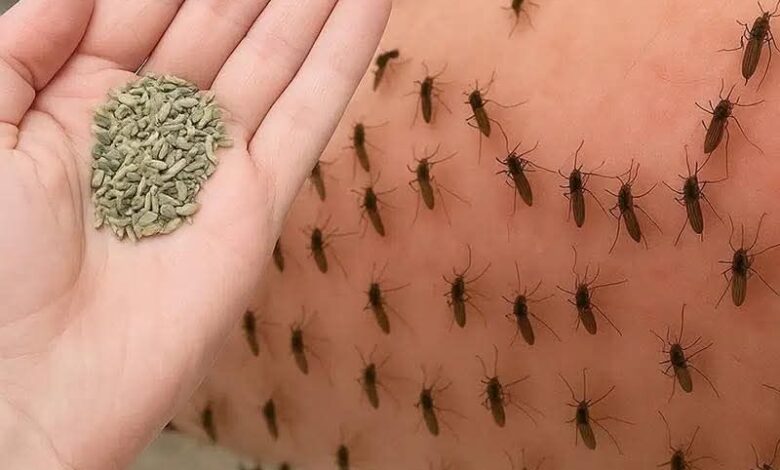DIY Natural Air Freshener: Eliminate Odors and Freshen Your Home with This Simple Recipe

Why Choose Natural Air Fresheners Over Chemical Alternatives
In today’s health-conscious world, homeowners are increasingly seeking natural cleaning solutions and eco-friendly alternatives to traditional household products. Commercial air fresheners often contain harmful chemicals, synthetic fragrances, and toxic compounds that can negatively impact indoor air quality and family health. Creating your own natural air freshener provides complete control over ingredients while saving money and reducing environmental impact.
This homemade air freshener recipe combines powerful natural deodorizers to create a fresh, inviting atmosphere throughout your home. Unlike store-bought chemical sprays, this DIY solution uses only natural ingredients that are safe for families, pets, and the environment.
The Science Behind Natural Odor Elimination
Natural ingredients like mint, lemon, and cinnamon work synergistically to neutralize unpleasant odors rather than simply masking them. Mint contains menthol compounds that provide natural antibacterial properties, while lemon’s citric acid helps break down odor-causing molecules. Cinnamon adds antimicrobial benefits along with a warm, welcoming scent that creates a cozy home atmosphere.
These natural deodorizers are particularly effective because they address the root causes of household odors rather than temporarily covering them with artificial fragrances. The combination creates a balanced aromatic profile that promotes freshness, cleanliness, and natural harmony throughout your living space.
Essential Ingredients for Maximum Effectiveness
Base Components:
- 300ml warm water (filtered preferred)
- 1 tablespoon dried peppermint leaves OR 3-4 drops peppermint essential oil
- 1 tablespoon dried flowers (lavender or chamomile) OR 3-4 drops lavender essential oil
- 100ml fresh lemon juice (organic recommended)
- 1/2 tablespoon ground cinnamon
- 1 dark glass spray bottle (preserves essential oil potency)
Optional Enhancements:
- Additional essential oils for custom scent profiles
- Dried herbs like rosemary or eucalyptus
- Natural preservatives like vitamin E oil
Step-by-Step Preparation Guide
Phase 1: Herbal Infusion Creation
Begin by gently heating 300ml of water in a small saucepan until warm (not boiling). Add dried peppermint and dried flowers to the warm water. Allow this natural mixture to steep for 10-15 minutes, enabling the herbs to release their aromatic compounds and beneficial properties.
Phase 2: Straining and Filtration
Using a fine-mesh strainer, carefully separate the plant material from the infused liquid. Ensure no solid particles remain, as these could clog your spray bottle mechanism. The resulting herbal tea should be clear and fragrant.
Phase 3: Blending Components
In a clean mixing bowl, combine the strained herbal infusion with fresh lemon juice and ground cinnamon. Mix thoroughly until the cinnamon powder completely dissolves, creating a uniform solution without any settling particles.
Phase 4: Essential Oil Enhancement
For those preferring stronger aromatherapy benefits, substitute or supplement dried herbs with concentrated essential oils. Add 3-4 drops of peppermint or lavender essential oil for enhanced scent intensity and therapeutic properties.
Phase 5: Final Assembly
Transfer the completed mixture into your dark glass spray bottle using a funnel to prevent waste. Shake vigorously before each use to ensure proper ingredient distribution and optimal effectiveness.
Advanced Usage Tips for Best Results
Storage and Preservation
Store your natural air freshener in a cool, dark location away from direct sunlight and heat sources. Since this recipe contains no artificial preservatives, use within two weeks of preparation for maximum potency and safety.
Custom Scent Variations
Experiment with different natural combinations to create signature scents for various rooms:
- Kitchen: Rosemary and orange for energizing freshness
- Bedroom: Lavender and vanilla for relaxation
- Bathroom: Eucalyptus and tea tree for cleansing properties
- Living Room: Cinnamon and apple for cozy warmth
Application Methods
This versatile air freshener works effectively in multiple ways:
- Room Spraying: Mist into air for immediate freshening
- Textile Treatment: Light application to curtains, bedding, and upholstery
- Automotive Use: Freshen car interiors naturally
- Carpet Refreshing: Light spray on carpets before vacuuming
Safety Considerations
Always test on a small, inconspicuous area before applying to fabrics or surfaces. While natural ingredients are generally safe, individual sensitivities can vary. Some essential oils may cause discoloration on certain materials.
Cost-Effective Benefits of DIY Air Fresheners
Creating your own natural air freshener offers significant financial advantages over commercial alternatives. A single batch costs approximately $2-3 to produce, compared to $5-10 for equivalent commercial natural air fresheners. Additionally, you avoid paying for unnecessary packaging and marketing costs associated with retail products.
Environmental Impact and Sustainability
Homemade air fresheners significantly reduce environmental impact by eliminating plastic packaging waste and chemical pollutants. The natural ingredients biodegrade safely, unlike synthetic chemicals that can persist in water systems and harm ecosystems.
Health Benefits of Chemical-Free Living
Switching to natural air fresheners eliminates exposure to volatile organic compounds (VOCs), phthalates, and other potentially harmful chemicals commonly found in commercial products. This is particularly beneficial for households with children, elderly family members, or individuals with respiratory sensitivities.
Professional Tips for Enhanced Results
- Use distilled water for longer shelf life
- Add a small amount of vodka or witch hazel as a natural preservative
- Keep multiple bottles for different rooms and scent preferences
- Label bottles with preparation dates for freshness tracking
- Consider seasonal scent variations for year-round enjoyment
Conclusion
This natural DIY air freshener recipe provides an effective, economical, and environmentally responsible solution for maintaining fresh, pleasant indoor air quality. By choosing natural ingredients over chemical alternatives, you create a healthier home environment while enjoying complete control over scent preferences and ingredient quality.
The simple preparation process makes this an ideal project for anyone interested in natural living, cost savings, and reducing household chemical exposure. With proper storage and creative customization, this homemade air freshener can become an essential component of your natural cleaning routine.